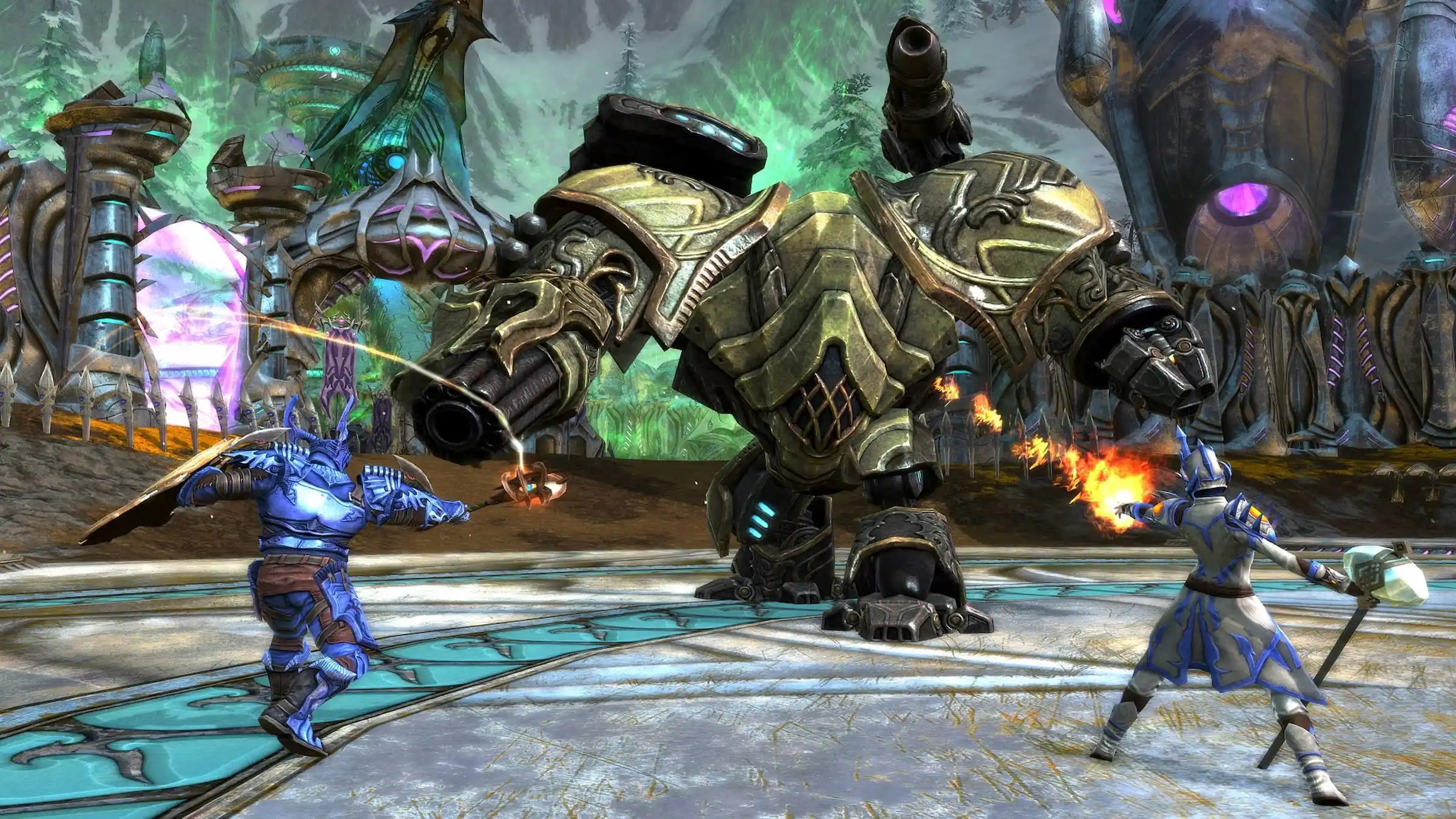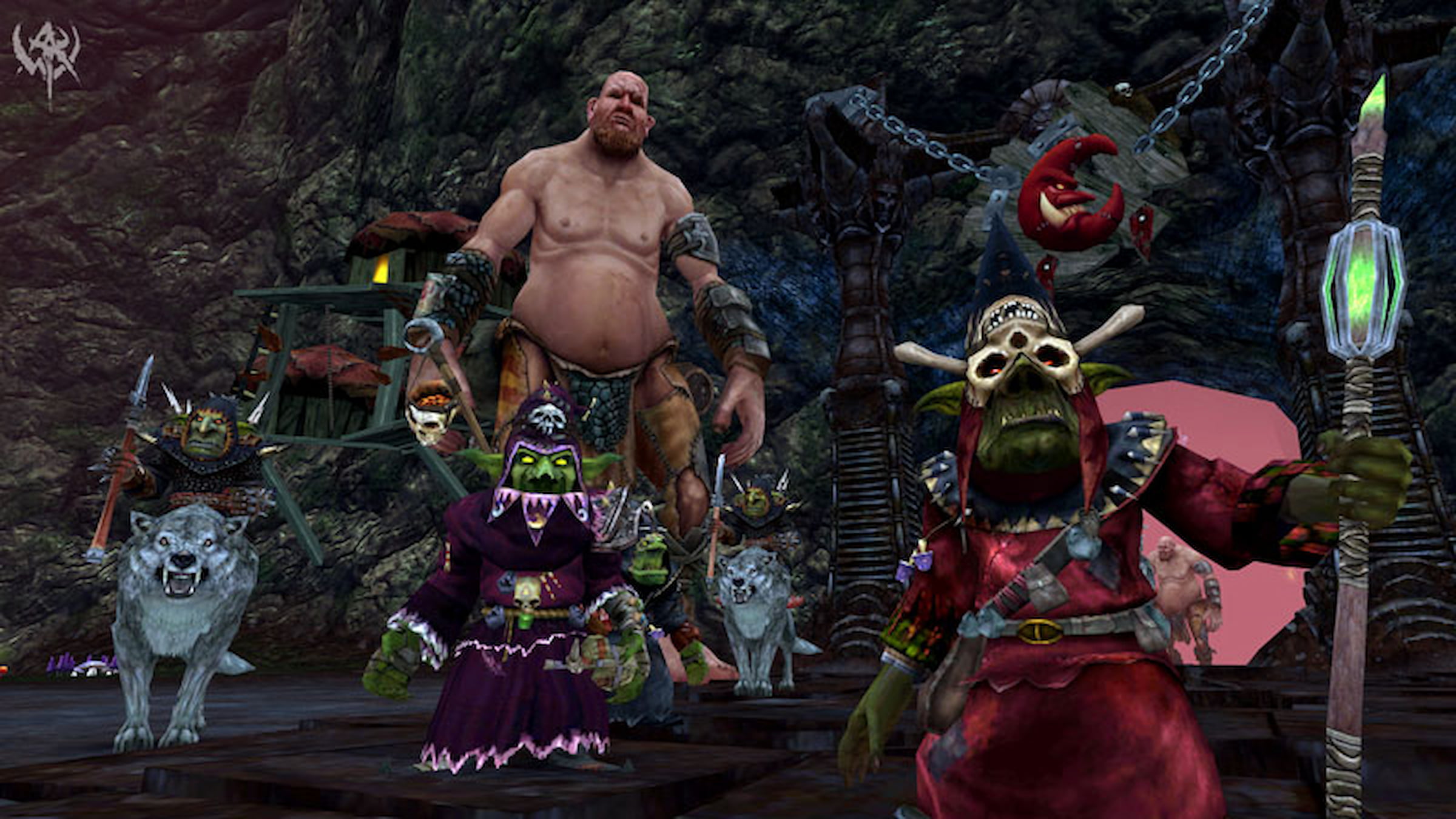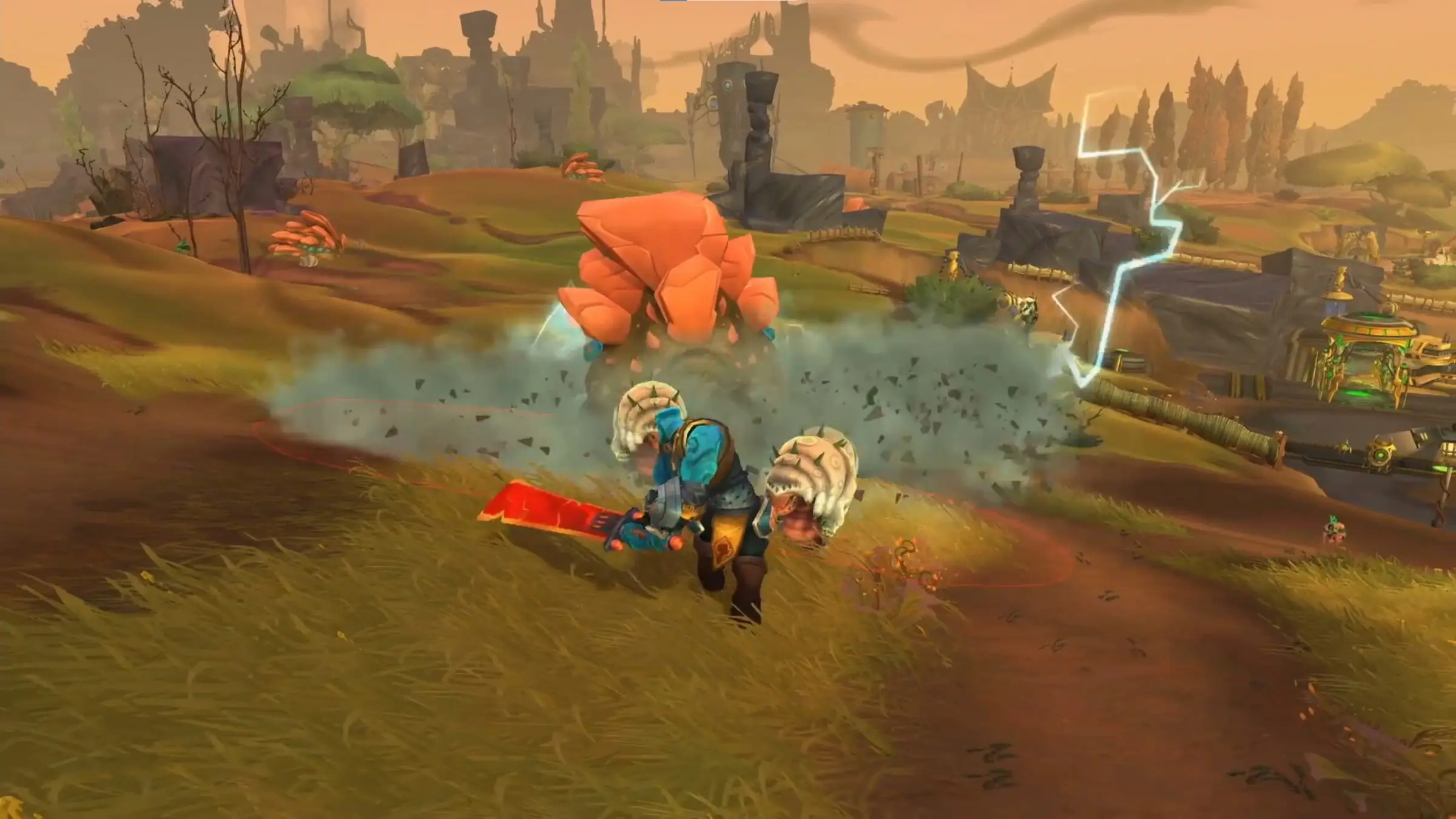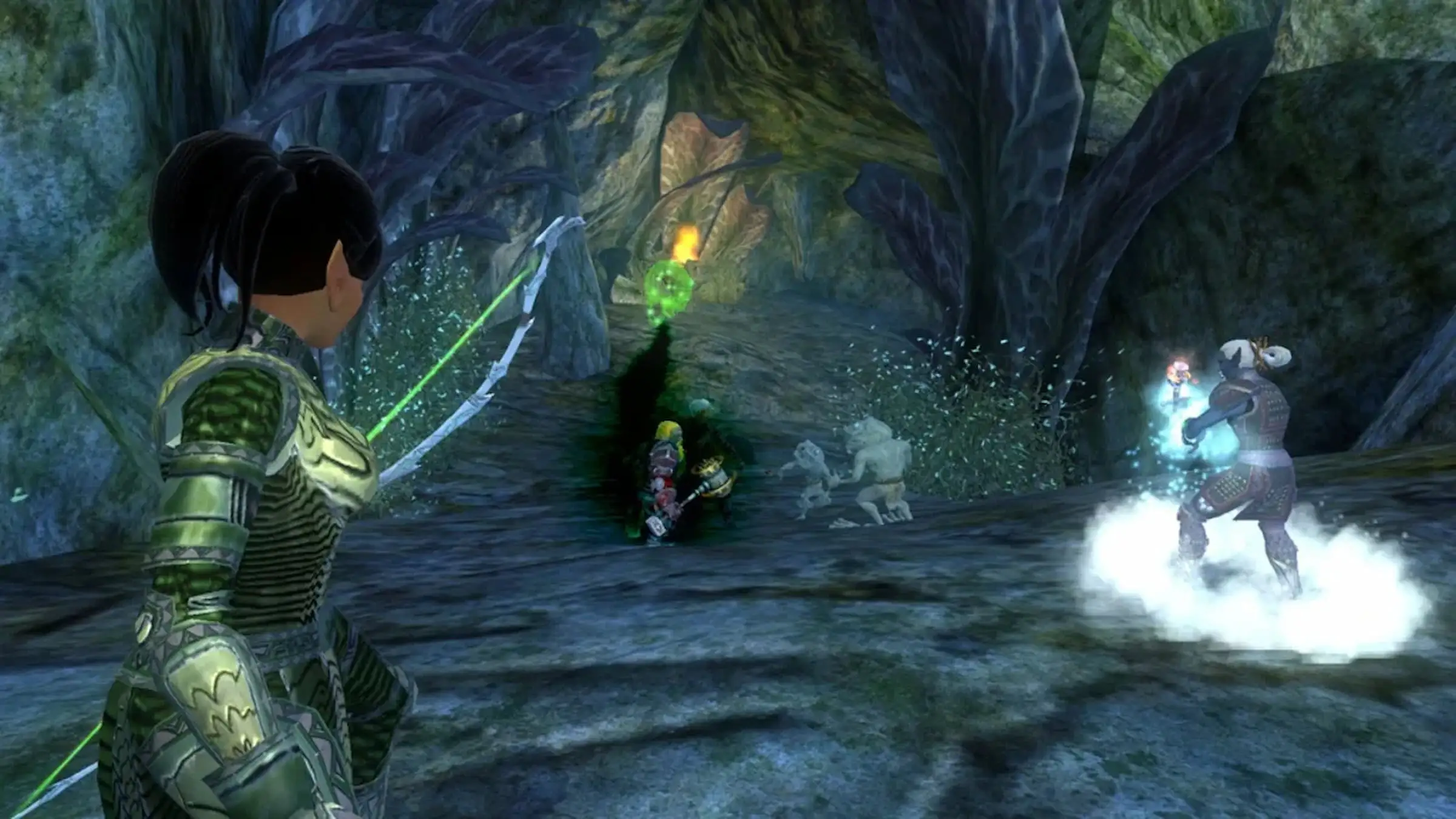
Despite the many fantastic worlds created by massively multiplayer online games, it’s hard to ignore how World of Warcraft has dominated the genre for two decades. Numerous MMOs have attempted to challenge it – some by imitating World of Warcraft, and others by trying innovative new gameplay – but very few have managed to gain a significant following.
It’s especially sad when online games disappear, because often they were made with a lot of creativity and big ideas that could have really changed the gaming landscape. These games all tried to compete with World of Warcraft, and for a while, it looked like they might succeed. Unfortunately, things didn’t work out, and they lost players over time. Here are four MMOs that had what it took to challenge World of Warcraft, even though they never quite got the chance.
4. Warhammer Online: Age of Reckoning

From the beginning, Warhammer Online felt like a serious competitor in the MMO space. While it borrowed some elements from World of Warcraft, it really stood out with its focus on large-scale PvP battles. Players fought to control territory, defend strongholds, and participate in massive, ongoing conflicts that felt incredibly immersive. This kind of large-scale player-versus-player design is something many MMO fans have wanted to see more of, and when it launched, Warhammer Online seemed poised to challenge World of Warcraft’s position at the top.
Warhammer Online struggled from the start, never quite reaching the quality needed to succeed. Constant bugs, server problems, missing content, and imbalances gradually caused players to lose interest. While the large-scale battles showed promise, they were often hampered by frustrating lag. Ultimately, the game never fully came together and stabilized, which is why it’s largely been forgotten. It had great ideas and a dedicated fanbase, but lacked the consistent development needed to become a truly standout title in the genre.
3. WildStar

WildStar launched with a bold vision and a unique personality, aiming to challenge World of Warcraft’s dominance. While it shared some fundamental similarities with WoW, it felt thoroughly modern and innovative. The combat was quick and responsive, and its telegraph system uniquely emphasized skillful movement. Plus, the game featured an incredibly detailed and customizable player housing system that remains unmatched by most modern MMOs. You could really sense the developers’ passion in every aspect of the game, and it felt like WildStar was designed to push the MMO genre forward, not just copy existing games.
Looking back at WildStar, I think the biggest issue was just bad timing. It came out when MMOs were starting to become way more casual, but WildStar doubled down on super-hard raids. That really limited who would even give it a shot. Instead of bringing in more players, it just kept shrinking the player base until there weren’t enough of us left to keep it going. Honestly, the game had some really clever ideas and deserved more time to find its footing, but the market just wasn’t there for that kind of game. That’s why it feels weird – people remember it with a lot of love, but it’s also kind of faded into obscurity. It had some of the smartest systems I’ve seen in an MMO, but it never managed to build a big enough community to survive.
2. EverQuest 2

EverQuest 2 was a good game from the start, but its timing was unfortunate. It launched right before World of Warcraft and felt stuck between older, more complex MMOs and the newer, streamlined style that WoW popularized. It offered a lot of depth – things like detailed crafting, diverse character classes, player housing, and a strong story – which were unusual for the time. It had everything it needed to be a successful follow-up to the original EverQuest, but it couldn’t compete with the massive popularity of World of Warcraft.
The main reason many players stopped playing EverQuest 2 was due to technical problems and frequent changes to the game’s development. As World of Warcraft became incredibly popular, EverQuest 2 faded into obscurity, becoming known primarily among long-time MMO players. Despite having strong foundations and a well-developed world, it couldn’t compete with the direction the market was heading. This explains why it’s largely forgotten now, though dedicated players still praise its complexity. Interestingly, EverQuest 2 is the only game on this list that’s still officially running today.
1. Rift
Rift is often cited as an MMO that came incredibly close to perfection. While it shared a similar structure to World of Warcraft, it refined almost every aspect of gameplay. Its unique soul class system offered a level of character customization unmatched by other MMORPGs, letting players build truly personalized characters by combining abilities from different specializations. The game also featured dynamic events that made each zone feel alive and constantly challenged players. Rift launched in a strong, polished state, and for a short time, it seemed like a genuine competitor to World of Warcraft.
Despite a promising start, Rift ultimately lost its way. While the game itself wasn’t bad, its developers focused more on making money and slowed down updates, causing players to lose interest. Many left not because of flaws in the game, but because it didn’t live up to its initial potential. Technical problems with the game’s engine and noticeably poor animations also held it back. Now, Rift is mostly remembered with nostalgia by those who played it when it first came out, but it’s largely faded from the MMO landscape. It strayed too far from what originally made it a serious competitor to World of Warcraft. Rift had the potential to be great, and it’s a shame it didn’t reach that potential, making it a significant missed opportunity in the MMO genre.
What do you think? Leave a comment below and join the conversation now in the ComicBook Forum!
Read More
- Hazbin Hotel season 3 release date speculation and latest news
- This 2020 Horror Flop is Becoming a Cult Favorite, Even if it Didn’t Nail the Adaptation
- Silver Rate Forecast
- Fishing Guide in Where Winds Meet
- Gold Rate Forecast
- Meet the cast of Mighty Nein: Every Critical Role character explained
- Where Winds Meet: How To Defeat Shadow Puppeteer (Boss Guide)
- South Park Creators Confirm They Won’t Be Getting Rid of Trump Anytime Soon
- Jelly Roll’s Wife Bunnie Xo Addresses His Affair Confession
- BrokenLore: Ascend is a New Entry in the Horror Franchise, Announced for PC and PS5
2025-11-22 22:13